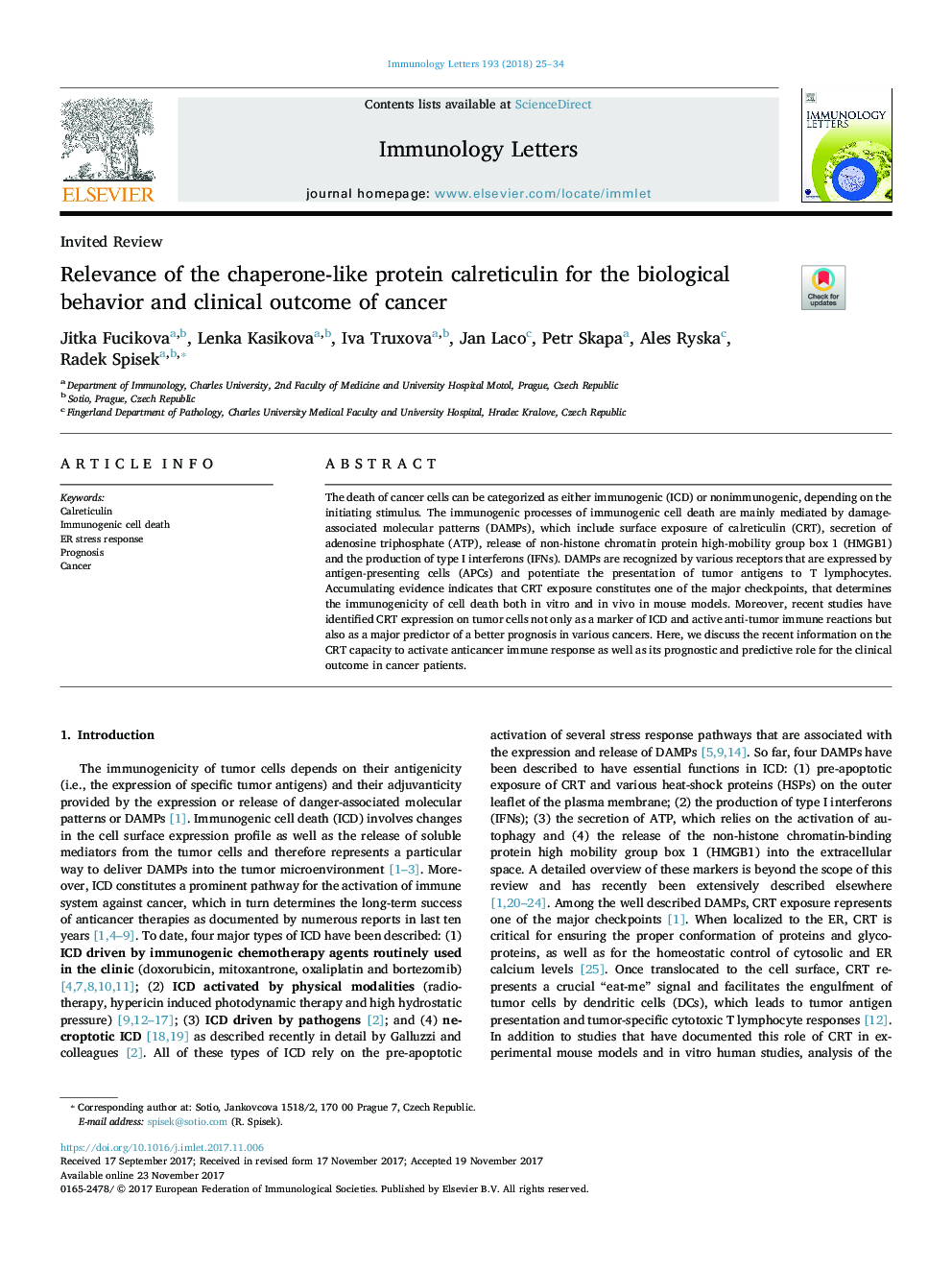| Article ID | Journal | Published Year | Pages | File Type |
|---|---|---|---|---|
| 8738385 | Immunology Letters | 2018 | 10 Pages |
Abstract
The death of cancer cells can be categorized as either immunogenic (ICD) or nonimmunogenic, depending on the initiating stimulus. The immunogenic processes of immunogenic cell death are mainly mediated by damage-associated molecular patterns (DAMPs), which include surface exposure of calreticulin (CRT), secretion of adenosine triphosphate (ATP), release of non-histone chromatin protein high-mobility group box 1 (HMGB1) and the production of type I interferons (IFNs). DAMPs are recognized by various receptors that are expressed by antigen-presenting cells (APCs) and potentiate the presentation of tumor antigens to T lymphocytes. Accumulating evidence indicates that CRT exposure constitutes one of the major checkpoints, that determines the immunogenicity of cell death both in vitro and in vivo in mouse models. Moreover, recent studies have identified CRT expression on tumor cells not only as a marker of ICD and active anti-tumor immune reactions but also as a major predictor of a better prognosis in various cancers. Here, we discuss the recent information on the CRT capacity to activate anticancer immune response as well as its prognostic and predictive role for the clinical outcome in cancer patients.
Related Topics
Life Sciences
Immunology and Microbiology
Immunology
Authors
Jitka Fucikova, Lenka Kasikova, Iva Truxova, Jan Laco, Petr Skapa, Ales Ryska, Radek Spisek,
